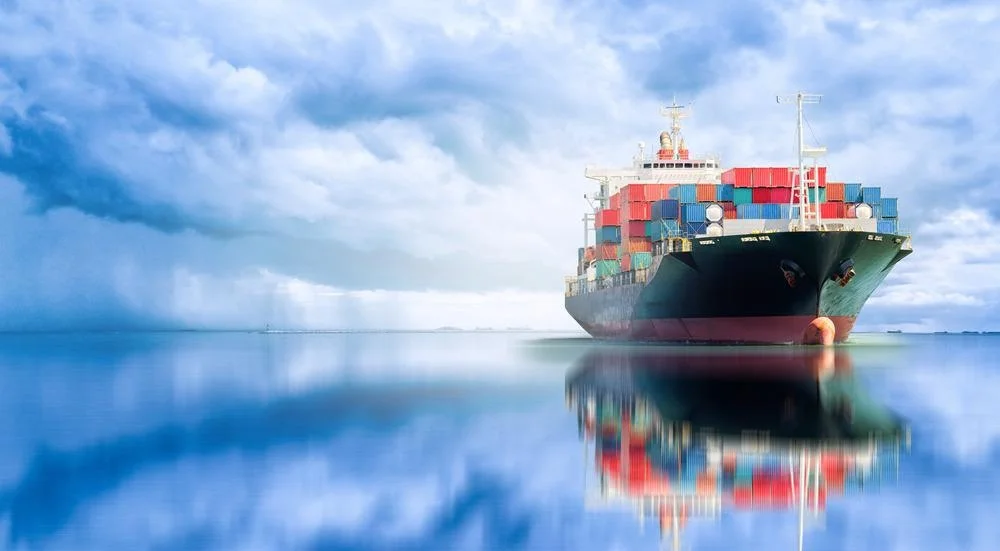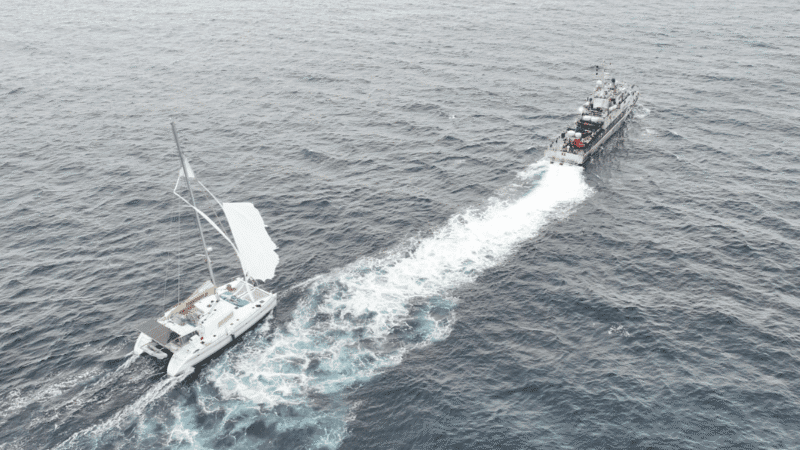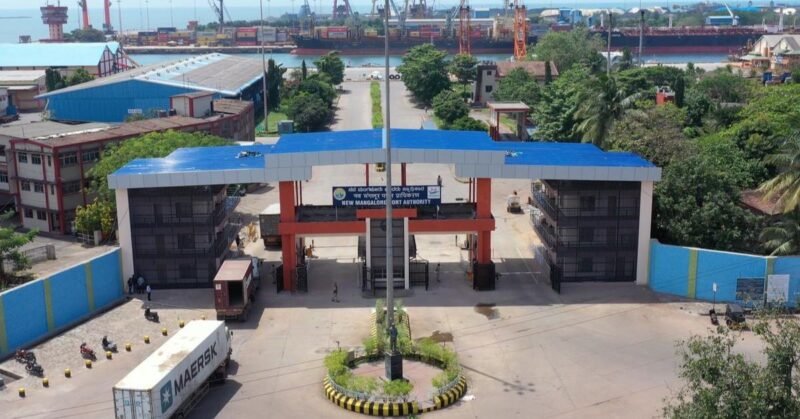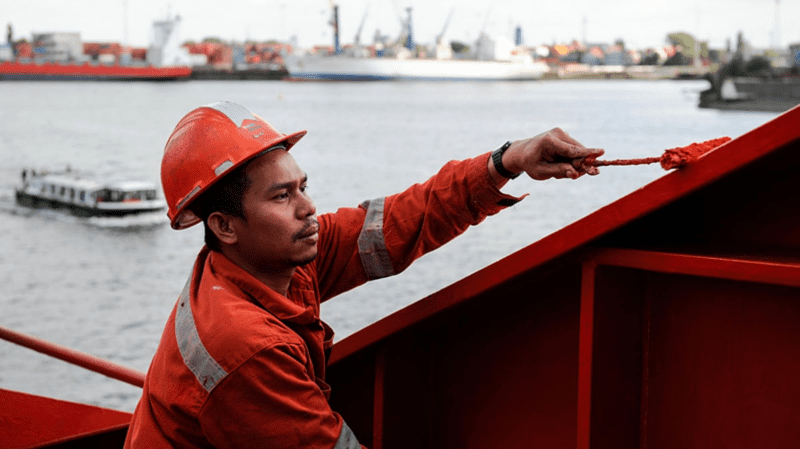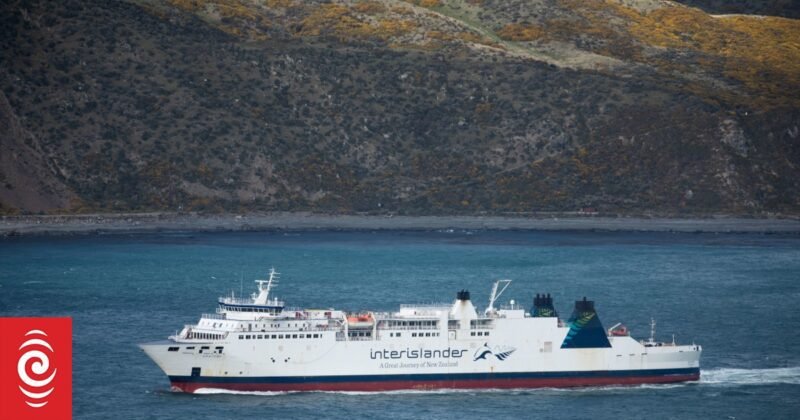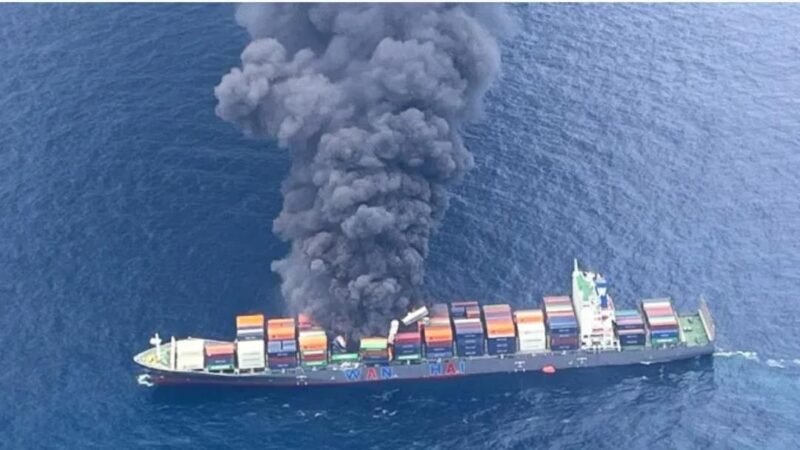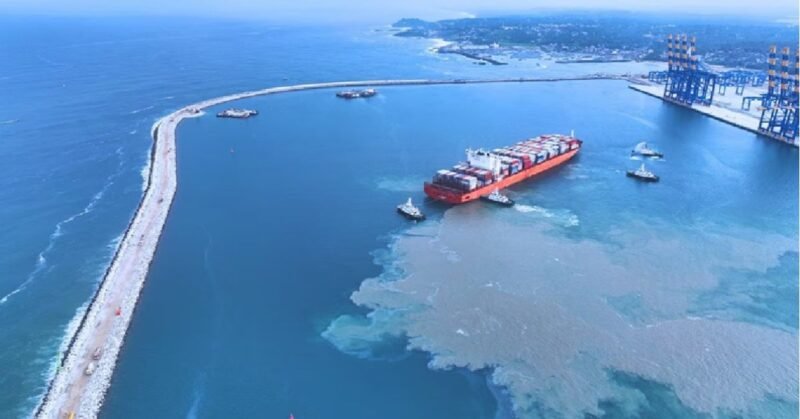Following Stories compiled in this News Digest for the week from 31 Jan 2022 to 06 Feb 2022 in descending order:
- Leading maritime cities playing a key role in the green and digital shift
- World’s first ammonia-ready vessel delivered
- Bahamas a Top-Performing Flag State, Says ICS Report
- ABS Guide for use of Lithium-ion Batteries in the Marine and Offshore Industries
- Indian sailors aboard Rwabee seized by Houthis are safe
- WTI Crude Passes $90 a Barrel for First Time Since 2014
- YO-YO effect in COVID-19 infections and restrictions causing havoc for seafarers
- US Maritime Unions Slam Plans for a USVI Ship Registry
- Mitsubishi to build world’s 1st LCO2 carrier intended for CCUS
- PM Modi extends wishes to Indian Coast Guard on Raising Day
- Working Together in Safety: The key to shipping’s future success
- Solar Energy Management Systems on an Industry-First Vessel
- Kenyan Seafarers want State to tame social dumping at port
- Green Ferry Refit is First of Its Kind in Canada
- World’s first hydrogen-powered boat is set for UAE launch
Leading maritime cities playing a key role in the green and digital shift
06 Feb 2022
The Leading Maritime Cities of the World report is back with a fresh ranking of the global maritime hubs and sees cities taking the lead in the green and digital transformation and attracting top experts and companies as future winners. There have been some dramatic developments since the last edition of the Leading Maritime Cities of the World (LMC) report was published in 2019. For one, we have been living with the pandemic. Ships have been stuck in ports, seafarers have been marooned on ships, there have been cargo delays, and container rates have hit the roof. But despite all this, the global economy is still in surprisingly good shape.

There has been a marked shift in climate sentiment generally and in the maritime community particularly. We are still far off emissions-reduction targets set by IMO, the EU and national authorities, but the pace of technological progress is phenomenal. Shipowners, charterers, cargo owners and lenders are gearing up for a decarbonized future, with the rapid adoption of zero-carbon fuels expected in the next 10 to 15 years. Ongoing digitalization, including ports and the supply chain, will support the green transition and supercharge efficiency across the industry.
The LMC report is compiled in cooperation between DNV and consultancy Menon Economics. Previous editions have not only attracted attention within the maritime community, but also raised awareness among the general public of the maritime industry’s importance as a cornerstone of global trade.
The report reveals the perceptions and assessments of 280 invited business executives – mostly shipowners and managers – from around the world. Around 50% of the nominees are based in Asia, 25% in Europe and the remainder in the US, Middle East and Africa.
Singapore’s strong performance across the board sees it ride out the pandemic to retain its number one spot overall. However, top positions in the five pillars have changed.
Following Singapore, another two Asian cities and two in Europe feature in the top five overall. Rotterdam’s ascent continues as it shoots into second place.
London is also up, from fifth to third place overall, although it loses its only previous top spot in Maritime Finance & Law to New York.
Fourth and fifth places overall go to Shanghai and strong all-rounder Tokyo, which has always scored well on objective indicators. Hong Kong slides from fourth to sixth place overall and out of the top five in Shipping and Maritime Finance & Law.
Together with the Singapore Shipping Association (SSA) and stakeholders in the maritime innovation ecosystem, the MPA is actively engaging and incentivizing maritime SMEs in digitalization. This includes the development of a maritime digitalization playbook to improve productivity and seize growth opportunities.
Singapore, Oslo, Shanghai and Copenhagen are perceived as the best-prepared cities for the digital transformation of the maritime industry, including the introduction of disruptive technologies. Oslo tops the list in sustainable technologies and solutions for the oceans, followed by Singapore and Nordic counterpart Copenhagen. Reference
World’s first ammonia-ready vessel delivered
05 Feb 2022
Greek shipowner Avin International has taken delivery of Kriti Future, the first ammonia-fuel ready vessel in the world.
The delivery ceremony for the 274-meter-long tanker took place at New Times Shipbuilding on 10 January 2022.

The ABS-classed Suezmax was has a deadweight tonnage of 156,700. The eco-friendly vessel was ordered in autumn 2020, according to data provided by VesselsValue.
Currently conventionally fueled, the vessel complies with the ABS Ammonia Ready Level 1 requirements, indicating it is designed to be converted to run on ammonia in the future.
The 170,811 cbm tanker also meets the ABS LNG Fuel Ready Level 1 requirements.
“This vessel represents a milestone in the development of the maritime industry and a step forward in the readiness to utilize alternative marine fuels,” Filippos Nikolatsopoulos, ABS Manager, Greece Business Development, pointed out.
As explained by ABS, Ammonia Fuel Ready Level 1 indicates the vessel conforms to the requirements outlined in the ABS Guide for Gas and Other Low-Flashpoint Fuel Ready Vessels. This is part of a suite of industry guidance on alternative fuels developed by ABS, including support for the development of ammonia as a marine fuel. Reference
Bahamas a Top-Performing Flag State, Says ICS Report
05 Feb 2022
The Bahamas has been confirmed as a top-performing flag state, achieving positive scores across all 19 categories of the International Chamber of Shipping (ICS)’s 2020-21 Flag State Performance Table.

In ICS’s latest report, The Bahamas scored highly for the Port State Control records of ships that fly the Bahamian flag, its ratification of conventions, crew- and training-related reporting, age of fleet and attendance at IMO meetings.
While The Bahamas performed strongly in all areas, other flag states provided fewer reports on seafarer wellbeing between 2020 and 2021 – a trend described by ICS as a “casualty of the pandemic”.
Only 42.9% of the 2,004 reports requested by the International Labour Organization (ILO) from governments in 2021 were granted, significantly down from the 70.7% rate of reporting for the previous year.
Shipowners and operators can use the ICS report to examine the credibility of a flag state and to put pressure on registries to make improvements related to safety at sea, protecting the marine environment and providing seafarers with decent working and living conditions. Reference
ABS Guide for use of Lithium-ion Batteries in the Marine and Offshore Industries
05 Feb 2022
Classification society ABS on Tuesday (1 February) said it has updated its Guide for use of Lithium-ion Batteries in the Marine and Offshore Industries.

“Lithium-ion batteries are the current dominant rechargeable battery choice for the maritime industry, since they provide high energy density, faster charging, low self-discharging, low memory effect and are lightweight in nature,” it states.
“Recognising the increased usage and benefits of batteries in the marine and offshore industries, and their installation in the new generation of hybrid electric vessels, ABS has developed the Guide for Use of Lithium-ion Batteries in the Marine and Offshore Industries.
“The Guide provides requirements and reference standards to facilitate effective installation and operation of lithium-ion battery systems and establishes safety guidelines for owners, operators, shipyards, designers, and manufacturers.”
The document covers lithium-ion battery types currently used in the industry (for example, lithium-ion cobalt oxide, lithium-ion manganese oxide, lithium-ion nickel manganese cobalt oxide, lithium-ion nickel cobalt aluminum oxide, lithium-ion iron phosphate, and lithium-ion titanate).
“Battery technology is continuously evolving with respect to battery chemistries and designs,” it adds.
Click here to download the Guide for use of Lithium-ion Batteries in the Marine and Offshore Industries. Reference
Indian sailors aboard Rwabee seized by Houthis are safe
04 Feb 2022
11 crew members including the seven Indians are being held by the Houthis after they seized the vessel Rwabee in the Red Sea on January 2.

India said on Thursday the seven Indian sailors taken captive by Yemen’s Houthi rebels when they seized a UAE-flagged merchant vessel on January 2 are safe though the captors still have not provided access to the hostages.
Eleven crew members, including the Indian, are being held by the Houthis after they seized the vessel Rwabee in the Red Sea. The rebels claimed the vessel was carrying “military supplies” and had entered Yemeni waters off the coast of Hudaydah “without authorisation”. Both India and the United Arab Emirates have demanded the release of the crew.
“Physical access to the crew has not been made available, including through the UN mission in Hudaydah,” external affairs ministry spokesperson Arindam Bagchi told a virtual weekly news briefing.
“We remain in touch with various sources, including through our embassies in the region. We do know that the captors allowed one of the Indian sailors to speak with his wife…on January 28. The sailor told his wife that all the crew members are safe. We will continue to monitor this case,” he said.
The Indian side earlier established contact with the UN Mission to support the Hudaydah Agreement or UNMHA to ascertain the well-being of the sailors and to convey a message to the Houthis that they should be released at the earliest. Reference
WTI Crude Passes $90 a Barrel for First Time Since 2014
04 Feb 2022
Oil shot across $90 for the first time since 2014 as winter weather in the U.S. threatened to shut in some oil production while geopolitical tensions continued to keep investors on edge.

West Texas Intermediate settled above $90 a barrel as markets assessed multiple bullish indicators. Traders question whether the OPEC+ coalition will be able to meet their quotas in full after agreeing to add supply to the market, while in the short-term extreme cold in the Permian Basin is curtailing some U.S. output. Geopolitical fears continue to add risk to the upside as Russia-Ukraine tensions ratchet higher and drone strikes continue in the Middle East.
“The path of least resistance remains to the upside, when we got through yesterday’s high the volume picked up and the rocket ship blasted off,” said Spencer Vosko, director for crude oil at Black Diamond Commodities LLC.
Crude is heading for a seventh weekly gain, with banks including Goldman Sachs Group Inc. seeing oil moving toward $100 a barrel. Oil’s rally poses a challenge for consuming nations and central banks as they try to stave off inflation while supporting global growth. Consumers around the world have contended with surging fuel costs for transportation and heating as oil prices march toward triple digits. Reference
YO-YO effect in COVID-19 infections and restrictions causing havoc for seafarers
04 Feb 2022
Covid-19 continued to severely affect the wellbeing of seafarers in 2021, according to the Q4 report of the Seafarers Happiness Index by maritime charity the Mission to Seafarers.
The report said that covid uncertainty and fluctuations caused an overall decrease in happiness from 6.59 to 6.41 and led to a major impact on seafarer welfare.

The survey, undertaken with the support of Wallem Group and the Standard Club, highlighted that 2021 saw seafarer happiness rise and fall throughout the year, mirroring the waves of Covid infections., The ‘yo-yo’ nature of the pandemic, caused by unpredictable variants and different rates of outbreaks across the world, is having a serious impact on mental health according to the report.
Mission to Seafarers says seafarers have raised concerns about the ‘draconian nature’ of repeated Covid testing and the quality of quarantine provision. The charity also noted that relationships onboard are strained and there have been an increasing number of seafarers talking of bullying and harassment on their ships. More seafarers are planning for a career change, which could lead to an imminent shortage of replacement crews and a drain of seafarers away from the industry.
The report highlighted the progress in ship-shore connectivity, with seafarers saying their online access has increased. They also expressed their gratitude for campaigns to deliver free access to calls or internet access over the holiday period.
In their responses seafarers again noted their lack of recognition as key workers, despite the initiatives to do so. They expressed concerns over limited freedom of movement, a shortage of vaccinations, and a perception that the profits of shipping companies are not being invested back into the workforce that keeps the industry moving.
There were also a number of worrying responses regarding watchkeeping and hours of work and rest. They reported a rise in a six on/six off watch patterns, something which is not felt to be sustainable. Engineers commented that they felt planned maintenance onboard was not being done, and some not to the necessary standards.
Andrew Wright, secretary-general of Mission to Seafarers, said: ‘Looking at the results of 2021 as a whole, we hope this report will encourage organisations to recognise the lessons for 2022, when it comes to investing in their seafarers, whether it is continuing to improve connectivity, adjusting working hours, or enhancing training. It is about understanding the challenges and making a difference to support the men and women serving at sea. Reference
US Maritime Unions Slam Plans for a USVI Ship Registry
03 Feb 2022
All of America’s leading mariners’ unions have joined together to oppose the creation of an open-registry flag in the U.S. Virgin Islands, describing it as an “exercise in labor arbitrage designed to generate registry fees.”

If created, the USVI flag would be “the first, and only, international US open ship registry,” according to its backers. It would be the fourth U.S.-managed open registry after Liberia, the Marshall Islands and Dominica.
The recently-announced plan would see the USVI set up its own flag, open to vessels of all nations. It would be developed in partnership with the privately-held company that operates the Dominica Maritime Administration, headquartered in Massachusetts.
The new USVI registry, according to its proponents, would offer higher quality assurance than competitors – including American-managed competitors, like Liberia and Marshall Islands, which have lower historical rates of detention on the Tokyo MOU PSC list. (A spokesperson for the Dominica registry was not available to comment on PSC performance.)
The registry’s backers suggest that the plan will provide employment opportunities for both U.S. and foreign mariners, but America’s maritime labor unions are skeptical. In a joint statement, the heads of the AMO, MM&P, SIU, SUP, AFL-CIO, MEBA and Marine Firemen’s Union said that they oppose the plan “in the strongest possible terms.”
“At its core, this proposal, allowing for the operation of vessels with foreign mariners under a United States open registry, is an affront to the American mariners who have always put themselves in harm’s way whenever called upon by our nation,” said the unions in a statement. “The establishment and growth of second registries by other industrialized nations has done little more than decimate their national flag fleets to the point that they are no longer able to provide the requisite military security and logistical support to their flag nations.” Reference
Mitsubishi to build world’s 1st LCO2 carrier intended for CCUS
03 Feb 2022
Japanese shipbuilder Mitsubishi Shipbuilding, part of Mitsubishi Heavy Industries (MHI) Group, has concluded a contract with compatriot shipping company Sanyu Kisen for the construction of a demonstration test ship to transport liquefied carbon dioxide (LCO2).

As informed, the vessel will be built at the Enoura Plant of MHI’s Shimonoseki Shipyard & Machinery Works, with completion and delivery scheduled for the second half of fiscal 2023.
The construction of the ship — which will serve for technology development and demonstration to realize high-volume CO2 transport –is part of New Energy and Industrial Technology Development Organization (NEDO) project initiatives.
Upon building completion and the delivery, the Engineering Advancement Association of Japan (ENAA) will charter the demonstration test ship from Sanyu Kisen to carry out research and development and demonstration tests for establishing LCO2 ship transportation technology.
Although ships to carry LCO2 used in the food industry have previously been constructed and operated in Europe and Japan, this newbuild is expected to be the world’s first LCO2 carrier intended specifically for carbon capture, utilization and storage (CCUS), according to Mitsubishi Shipbuilding.
Specifically, Mitsubishi Shipbuilding will be in charge of all aspects from the ship design through construction, including the cargo containment system. In September 2021, the shipbuilder received approval in principle from Bureau Veritas for the cargo tank system to be mounted in an LCO2 carrier.
With a tank capacity of 1,450 cbm, the new demonstration test vessel will feature a length of 72 meters and a beam of 12.5 meters.
CCUS is garnering attention today as an effective means of achieving a carbon-neutral society. Because CO2 emissions sites are often located distant from the sites selected for carbon utilization or storage, demand is expected to increase for LCO2 carriers which can transport their cargo safely and economically. Reference
PM Modi extends wishes to Indian Coast Guard on Raising Day
02 Feb 2022
Prime Minister Narendra Modi on Tuesday extended his greetings to the Indian Coast Guard on their Raising Day.

“Best wishes to the Indian Coast Guard family on their Raising Day. An organisation of great strategic importance, our Coast Guard is an outstanding team of professionals, who steadfastly secure our coasts and also are at the forefront of humanitarian efforts,” tweeted PM Modi.
Indian Coast Guard (ICG) is celebrating its 46th Raising Day on Tuesday.
“From just seven surface platforms in 1978, the ICG has grown into a formidable force with 158 ships and 70 aircraft in its inventory and is likely to achieve targeted force levels of 200 surface platforms and 80 aircraft by 2025,” stated a press release issued by the Ministry of Defence on Monday.
As the fourth largest Coast Guard in the world, it has played a significant role in securing the Indian coasts and enforcing regulations in the maritime zones of India, said the release.
The ICG has saved over 1,200 lives at sea in the last year and more than 11,000 since its inception. It has also rescued approximately 13,000 personnel to date during various ‘Aid to Civil Authority’ operations viz. assistance provided to civil authorities during floods, cyclones and other natural calamities; most recently during the recent floods in Maharashtra, Karnataka and Goa. Reference
Working Together in Safety: The key to shipping’s future success
02 Feb 2022
The Together in Safety coalition’s core objective is to save seafarers’ lives, while delivering improved business efficiency and commercial effectiveness, and is fundamental to safeguarding shipping’s future success.

A host of industry bodies have signed up to the safety coalition, including the International Chamber of Shipping, BIMCO, OCIMF, Intertanko, Intercargo, Interferry, Cruise Liners International and the World Shipping Council, in addition to many of the world’s major shipping companies.
SAFETY is the single most important subject for any shipping company. Getting our safety programmes right is imperative, while key to shipping’s future success.
Safety is not just about incidents; it is more encompassing and fundamental to everything we do. Put simply, safety is about people. It is about our employees who are the lifeblood of our companies. Safety is about motivating our people to do a great job every day.
Safety is about developing a mindset of learning from each other, about enabling teams to work together, generating fresh ideas, and delivering solutions.
Safety is about putting our people at the very centre of shipping. Safety is about how the industry can work as one group with a common purpose and as equal partners.
The most important aspect of safety is in saving the lives of our seafarers. Data tells us that while there have been improvements in some shipping sectors, the overall number of incidents and fatalities has stagnated, with little improvement in recent years.
Shipping is still one of the world’s most hazardous industries.
From another perspective, it has been proven that companies with a great safety performance record also have a great business performance. It is also recognised that the traits of a great safety leader are the same as for a great business leader.
With a strong focus on safety, the management and the entire organisation can focus on the positive aspects of preventing incidents, with the added advantage of a strong commercial performance.
Three years ago, a new approach was developed by establishing an industry coalition called Together in Safety. The principal objective is to save seafarers’ lives, while delivering improved business efficiency and commercial effectiveness.
Together in Safety comprises all of shipping’s industry groups, including the International Chamber of Shipping, BIMCO, OCIMF, Intertanko, Intercargo, Interferry, Cruise Liners International, the World Shipping Council and many of the world’s major shipping companies, as well as insurance, classification societies, and country representatives.
There are no costs involved in becoming a partner in Together in Safety, and it is free to use the many proven best practices to deliver sustained learning and an improved performance.
The major focus is on stopping major incidents from happening, where people are killed or there is major damage and pollution. ‘Together in Safety’ has benefited from liaising with other industries, such as air and rail, that have faced similar challenges and made significant improvements.
The next steps are straightforward, with companies wishing to take part in the Together in Safety initiative able to sign up via website.
The benefits are huge, both immediately and in the future. Reference
Solar Energy Management Systems on an Industry-First Vessel
01 Feb 2022
In the last few years, a quiet revolution has been taking place in the shipping industry. Shipping companies are beginning to transition toward fully renewable or cleaner energy sources to drive their vessels, and gradually giving up their use of fossil fuels. In an industry first, Finnish shipping firm Wartsila installed a hybrid energy system with solar power onboard the Paolo Topic bulk carrier in 2021.

Most of the goods traded between countries are transported on large container ships that require huge amounts of energy to get from Port A to Port B. By volume, around 80% of all world trade takes place between countries and across waters; 70% of world trade by value is carried by international shipping.
For the last couple of hundred years, these ships have been mostly powered by burning fossil fuels. Fuel combustion also typically provides power for auxiliary equipment such as heating and appliances.
As has become all too clear by now, this means of harnessing energy has a devastating impact on the health of the planet. Shipping accounts for 3.1% of the world’s annual carbon dioxide (CO2) emissions according to the latest research, plus 13% of sulfur oxide (SOx) emissions and 15% of nitrous oxide (NOx) emissions.
Recently, shipping companies have been trying to reduce the environmental damage caused by their industry by installing solar energy systems on merchant vessels. These systems bolster or even replace fossil fuel energy needed to drive the ships or heat their living and storage areas.
However, while inland solar energy is a relatively mature technology with wide-ranging applications, its marine use remains limited. Most solar installations in the marine industry supply static lighthouses and buoys, or battery charging for small sailing yachts.
With current technology, researchers estimate that solar energy investments for ships could take between 10 and 27 years to pay themselves back in reduced fuel costs, depending on solar radiation levels and fluctuations in fuel costs.
Wartsila, a leading shipping company based in Finland, announced its successful installation of a new hybrid energy system using solar power on a bulk carrier, the merchant vessel Paolo Topic. The company says that with this new installation the Paolo Topic is the most technologically advanced ship of its class to ever set sail.
Wartsila announced its plans to upgrade the Paolo Topic in 2019. The company completed the project in partnership with Marfin Management, the firm that operates the Paolo Topic, and leading solar panel manufacturer Solbian.
Solar power is still a long way off being widely adopted in the shipping industry. Despite the allure of potential carbon-free international trade, marine solar power is still not a mature enough technology to make widespread adoption commercially viable.
Unlike static land- or even ocean-based solar panel installations, solar panels on ships must deal with unpredictable and dynamic conditions. These situations create new technical challenges for the mechanical systems that support solar panels and optimize their position for maximum energy capture.
For example, ships can change location very quickly – by up to a degree of latitude or longitude in one day. This means that the sun is at different points in the sky, so directing solar panels to point straight at the sun for maximum conversion efficiency is challenging.
While ships generally maintain a mostly straight line for much of their voyage, they are still capable of turning and often do. This also alters the incidence angle for any onboard solar panels, affecting their ability to generate power.
For solar power to completely replace fossil fuels in the shipping industry, these and many more unique challenges for moving, sea-based solar energy generation must be tackled. Reference
Kenyan Seafarers want State to tame social dumping at port
01 Feb 2022:
Kenyan seafarers want the government to crack the whip on social dumping which they claim is rife at the port of Mombasa.

Social dumping is a practise where employers use cheap labour that is usually available at the point of production. In most instances, foreigners or immigrant workers are preferred over locals.
According to former Secretary-General of the Seafarers Union of Kenya (SUK), Andrew Mwangura, some shipping companies in Mombasa have continued to hire immigrant workers at deplorable wage rates, a clever tactic to evade the local labour laws and prop up their profit margins.
”The practice commonly known as social dumping thrives upon the influx of hundreds of migrant workers from Eastern Europe and Asia who land here through all types of routes and different guises, every year,” Mwangura said.
He said most of the immigrants are employed in the fisheries and maritime transport sector with no social protection, deplorable wages, and inhuman living conditions aboard Mombasa-based ocean-going vessels.
He termed them as “slaves” of the 21st century.
Mwangura noted that due to their marginalisation in the foreign country and the risk to be sanctioned by their employers, these workers have often no recourse to address their plight.
He said several law-abiding companies domiciled at the port of Mombasa are getting frustrated by the enormous competitive advantage of their competitors. Reference
Green Ferry Refit is First of Its Kind in Canada
01 Feb 2022
A newly retrofitted electric ferry is the first in Canada to be powered completely by a zero-emissions, lithium-ion power and propulsion system containing no diesel fuel components.

In 2018, PortsToronto issued a request for expression of interest (RFEOI) to reduce air and noise emissions from its 96-foot Marilyn Bell I, used for transporting passengers, vehicles and supplies the very short distance (90-second trips) to and from Billy Bishop Toronto City Airport on Toronto Island.
St. Catharines-based marine electrical engineering firm Canal Marine & Industrial Inc. (CANAL) was successful in proposing a 100% emissions free option, and it went on to deliver the complete electrification retrofit of the formerly diesel ferry, from conception to installation. The vessel, which was converted from diesel to fully electric during a 20-week refit at Toronto Drydock, returned to service in December and is now operating 100% emissions free.
Originally built by Hike Metal Products in Wheatley, Ont., and in operation since 2010, Marilyn Bell I was previously upgraded to run on biodiesel fuel in 2018 before its diesel generators and engines were removed in 2021 to make way for a new electric power and propulsion system and a suite of lithium-ion batteries.
The project involved the complete transition of the Marilyn Bell I to CANAL’s ZEROe Power and Propulsion Solution. “In the vessel itself, we replaced the main engines with two 250kw electric induction motors basically mounted in the same location as the original engines,” said Shawn Balding, CANAL’s general manager and project manager for the Marilyn Bell refit, adding that Allied Marine & Industrial assisted with mounting the propulsion motors, alignment of the shafts and fitting of the Vulkan couplings attached to the existing shaft lines. The vessel’s existing azimuthing pod thrusters also remained.
Increasingly, hybrid- and all-electric propulsion solutions are gaining interest and being put to use in the maritime sector, especially for vessels like ferries and other workboats that operate on fixed routes with frequent and relatively short trips and docking times. Reference
World’s first hydrogen-powered boat is set for UAE launch
31 Jan 2022
Swiss-based start-up THE JET ZeroEmission announced that it has inked an agreement with Zenith Marine Services LLC, a UAE based company; and DWYN LLC to manufacture and operate ‘THE JET’ – the first clean-energy, hydrogen-powered flying boat. Featuring an iconic design, the boat’s world premiere will be held in Dubai..
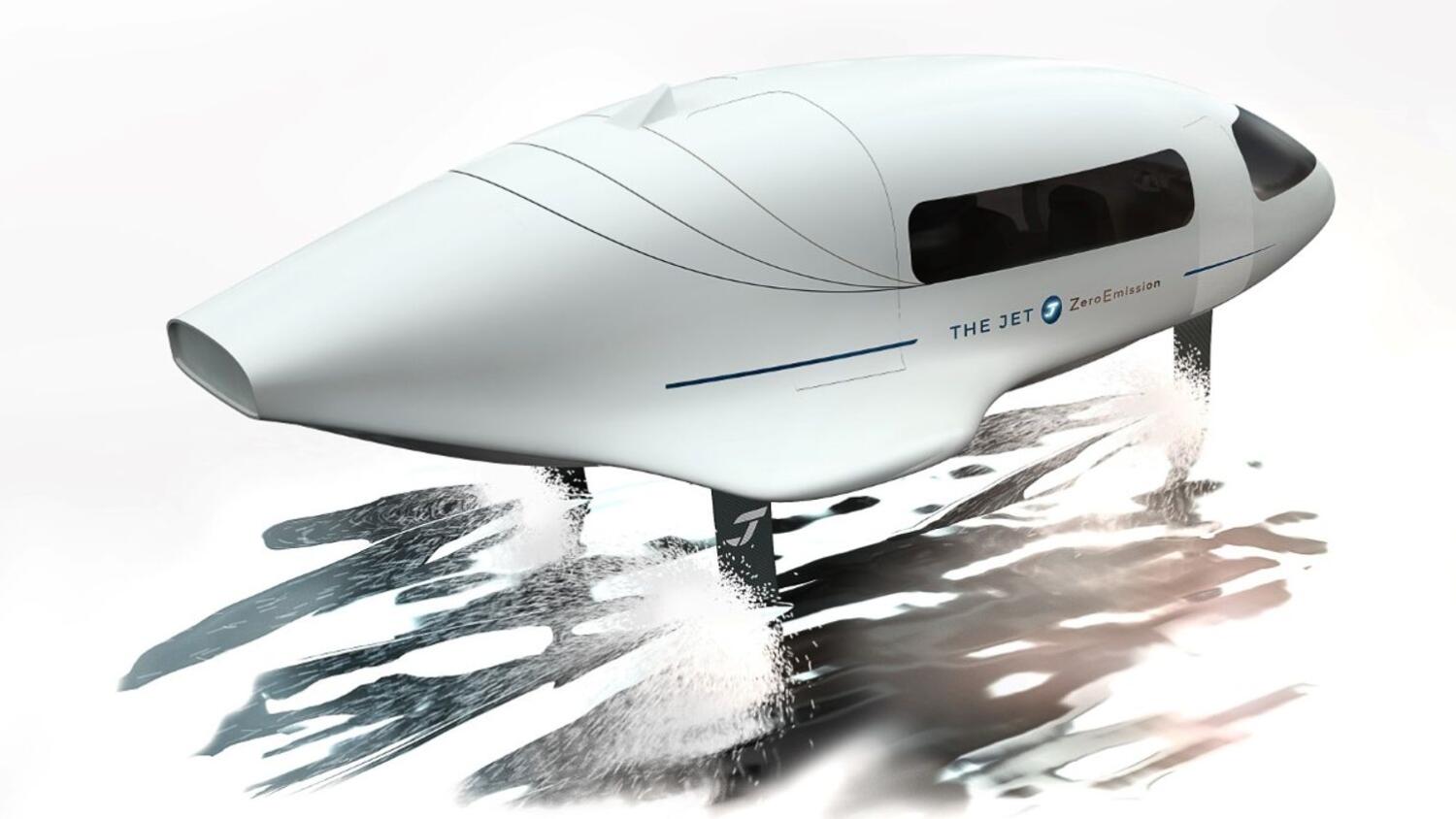
The announcement reflects Dubai’s leading position as a global hub for future industries. Dubai’s robust infrastructure and supportive investment environment has made it an ideal launchpad for innovative companies to reach their global ambitions.
‘THE JET’ features cutting-edge characteristics and technologies, making it capable of flying in silence over the waters at a cruising speed of 40 knots. The luxurious boat has a capacity of 8 to 12 passengers, and is equipped with two fuel cells and an air conditioner as well as other clean-tech, environmentally friendly technologies that help reduce carbon emissions.
Commenting on the occasion, Alain Thébault, Founder of THE JET ZeroEmission and a previously world sailing speed record holder in 2009 & electric Seabubbles prototypes inventor in 2016, said: “We are pleased to make this announcement from Dubai, and be able to manufacture and launch ‘THE JET’, which is going to be the world’s first boat to sail without noise, waves, or emissions and have the capability of flying 80cm above the waters.”
The announcement is a step forward for the clean-tech industry and for the start-up itself. The start-up has also been able to secure part of the required funding of 10 million Euros. Reference
Note: All above news items compiled in this digest should be considered as news in brief. For detailed news, please refer to reference link, mentioned with each item.
Share it now

